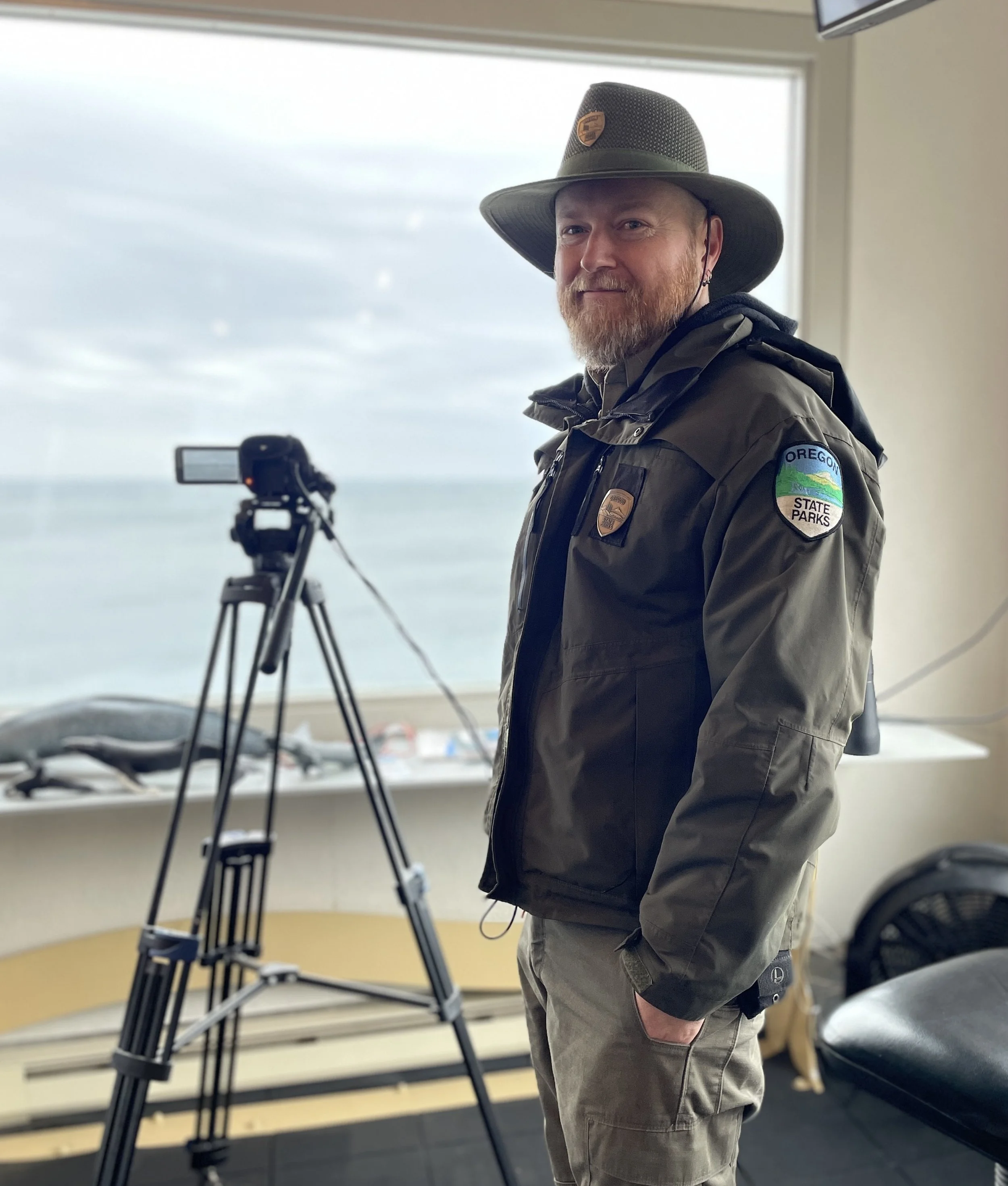In pod we trust
Focus on the flukes at Winter Whale Watch Week


By Gretchen Ammerman
Oregon Coast TODAY
During a recent visit to the Whale Watching Center in Depoe Bay to learn more about the upcoming winter Whale Watch Week, Wednesday, Dec. 28 through Sunday, Jan.1, I overheard this conversation:
Whale Sighting Hopeful: “What is the best day to see whales?”
Volunteer Whale Whisperer: “They travel up and down the coast and they are currently on their southern migration. Next week is typically the time we see the most, but there’s no guarantee.
WSH: “Okay, but what is the BEST day?”
VWW: “Again, these are wild animals, so we can’t narrow it down to one day, but the week between Christmas and New Year’s is a good bet.”
WSH: “But we have people joining us and we promised them they would see whales, so we really need to know what day would be best to bring them here.”
VWW: “Well, the whales don’t call us ahead of time, so I’m afraid I don’t have an exact answer to that.”
Well below the whale viewing window where this conversation took place, in an office filled with slightly creepy yet very cool antique objects like a skull, a harpoon and a seal fin skeleton in a fish tank that looked like a pinniped version of Cousin Itt from the Addams Family, I met with with Assistant Seasonal Ranger Justin Duering.
This is his first season at the center, mostly because COVID closures kept the doors shut for more than two years.
“We didn’t open until May of this year, so this is our first time open during an official whale watch week,” he said. “It’s been pretty busy so far because people are so happy we are open again.”
Gray whale migrations happen twice yearly: in the spring they head north to the waters off Alaska to feed; and in the winter, head south to Baja to calve.
Pinning down an exact best time for viewing gray whales is as elusive as an exact count of the annual population numbers.
“I haven’t received an official count this year, but the population has been hovering at roughly 20,000 total,” Duering said. “Whale watch week helps because we count them during it, which contributes to figuring out what the numbers are.”
Depoe Bay is fairly well known to cetacean enthusiasts for being the epicenter of the Central Coast “resident” gray whale population, a name that is slightly misleading.
“Many people think the residents stay all year,” Duering said. “But they are actually mostly summer residents. By the time the winter whale population starts arriving, they have mostly all started heading south.”
Another frequent question asked at the center is the best time of day to see the whales.
“It can actually be any time because they are moving,” Duering said. “During migration the whales are in fasting mode, so I direct people to look further out because they aren’t coming into the bay to feed.”
Other tips include choosing times when the ocean is calm and when the light is low, not when the sun is directly overhead, which can cause glare on the water.
One thing Duering could confirm is that there are whales to see this year.
“We are seeing a gradual increase in numbers,” he said. “So they are definitely beginning to show up.”
Including at the center, volunteers with the “Whale Watch Spoken Here” program will answer questions and help with spout sightings at 10 sites on the Central Coast, from the Neahkahnie Mountain Overlook near Manzanita to the Heceta Head Lighthouse south of Yachats. But with abundant binoculars to borrow and high-level video equipment bringing the whales virtually closer, not to mention the indoor location providing the best bet during inclement weather, the center is still a firm bet.
“This is a really unique place in the state parks,” Duering said. “It’s a place people can come, learn about whales, interact with parks staff and trained volunteers and get help spotting the whales. I love the energy here, the way the whole place will erupt with excitement when a whale is spotted. It’s neat to be a part of it.”
For more information, including a full list of locations, go to orwhalewatch.org.
• Want more cetacean information? Join the Midcoast Watersheds Council for the online presentation, “Who are the Whales?” on Thursday, Jan. 5. Lisa Hildebrand, PhD student at Hatfield Marine Science Center, will cover the individual whales that are known to frequent our coastal waters, and what she and her colleagues have been able to learn about them.
The online presentation begins at 6:30 pm. For more information and to register, go to midcoastwatersheds.org.
• For an even deeper dive into the resident whales, Duering recommends checking out the Hatfield Marine Science Center’s Youtube page for the last “Science on Tap” presentation.
“One of the things it covers is the efforts to get this group of whales designated as a distinct population,” he said. “There are actually physical differences between them like skull size, so if we can get good numbers on them it will help to really address conservation plans and protections for them.”

